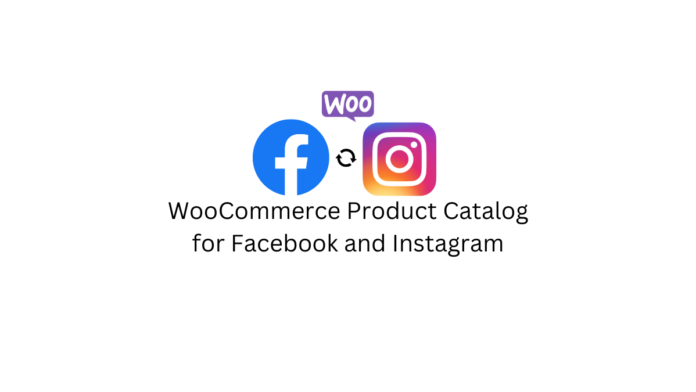Last updated - April 13, 2023
It is vital as an eCommerce store owner to effectively promote your products across different channels for maximum exposure and in turn, sales. So it is no surprise that online store owners make use of marketplaces on social media platforms like Facebook and Instagram to promote their products.
If you are a WooCommerce store owner, the process is even simpler. You can simply sync your WooCommerce store’s product catalog feed to your business’s Facebook and Instagram pages with the use of a plugin with relative ease.
While there are a lot of plugins in the store to sync your product feed to Facebook and Instagram, ELEXtension’s Catalog Feed for Facebook and Instagram plugin is one of the most powerful solutions in the market as it highly effective product catalog feeds with relative ease while offering all the features you would want as a store owner.
So in this article let us see how you can create and sync your WooCommerce Products with Facebook and Instagram marketplaces with this plugin.
To start with, download the Catalog Feed for Facebook and Instagram plugin from the ELEXtensions website, you can get the plugin for $69 for a single site or if you handle multiple websites, you can go for the multisite licenses which are cheaper per website at $99 for 5 websites or $199 for 25 websites respectively.
Once downloaded, install and activate the plugin on your WordPress dashboard as you would with any other plugin. Now let’s get started with creating a product feed on your WooCommerce website that automatically syncs with your business’s Facebook and Instagram.
Setting up your Facebook Business Account
To begin with, let us see how to set up your eCommerce store’s business account in a way that you can automatically sync products from your WooCommerce store to Facebook and Instagram.
Facebook Page for your WooCommerce Store
In the case of not having a page for your WooCommerce store, create one before you can proceed with syncing your WooCommerce product catalog with Facebook. From your Facebook homepage, create a new page and fill in the information required, make sure to use your WooCommerce store’s name, category, and description that will help visitors get an understanding of your business.
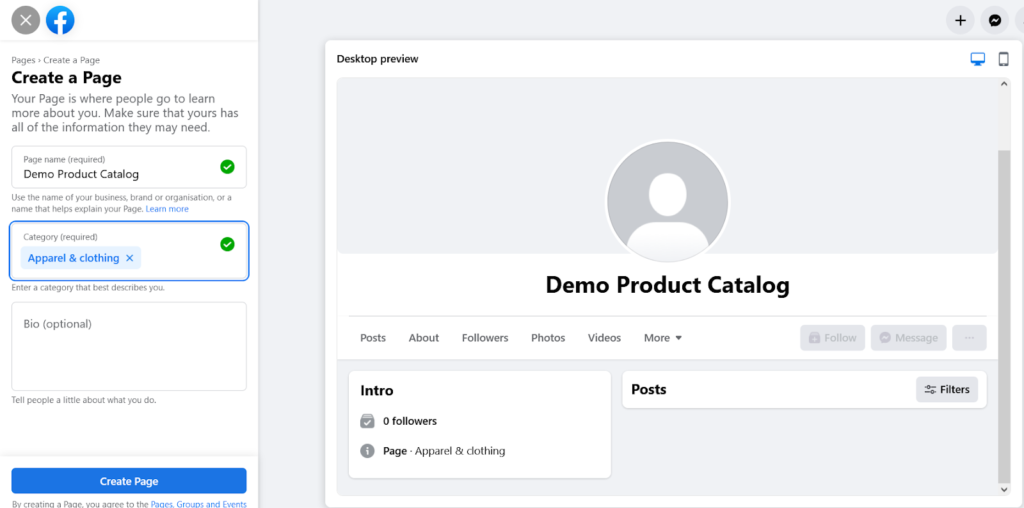

Having done this, go to Facebook Commerce Manager to add a new catalog.
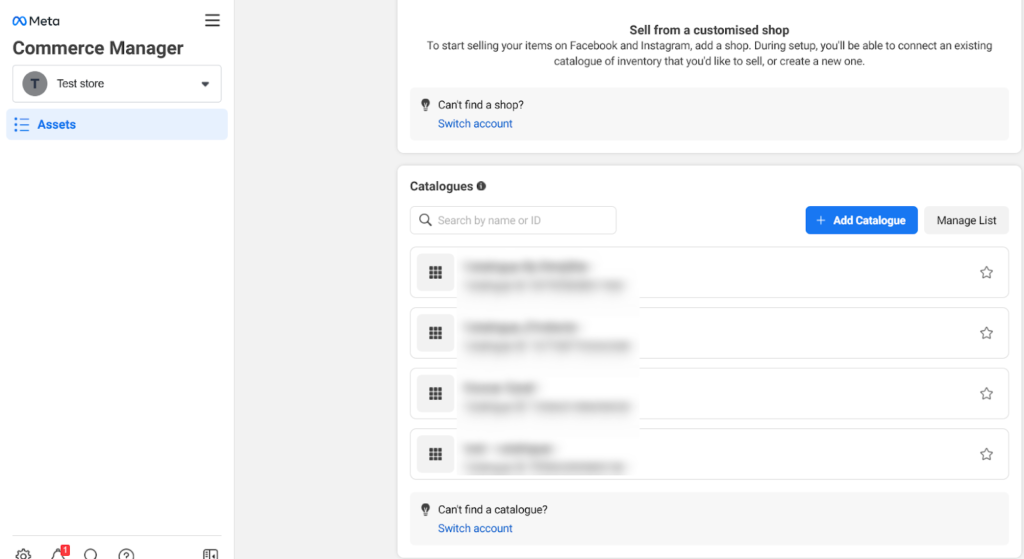

Here, you can add a new catalog to your eCommerce store to which you can sync data from your WooCommerce website, with the help of the plugin. Now let us move to how to do that with the plugin.
How to Create a New Facebook Catalog Feed?
Now move to your WordPress dashboard and click on the Facebook Shopping Feed menu to open the plugin. You will see the first page which will show the menus to manage feeds, create a new feed, settings, and your plugin license page. Since you don’t have product feeds yet, go to Create Feed menu to get started which will look like this.
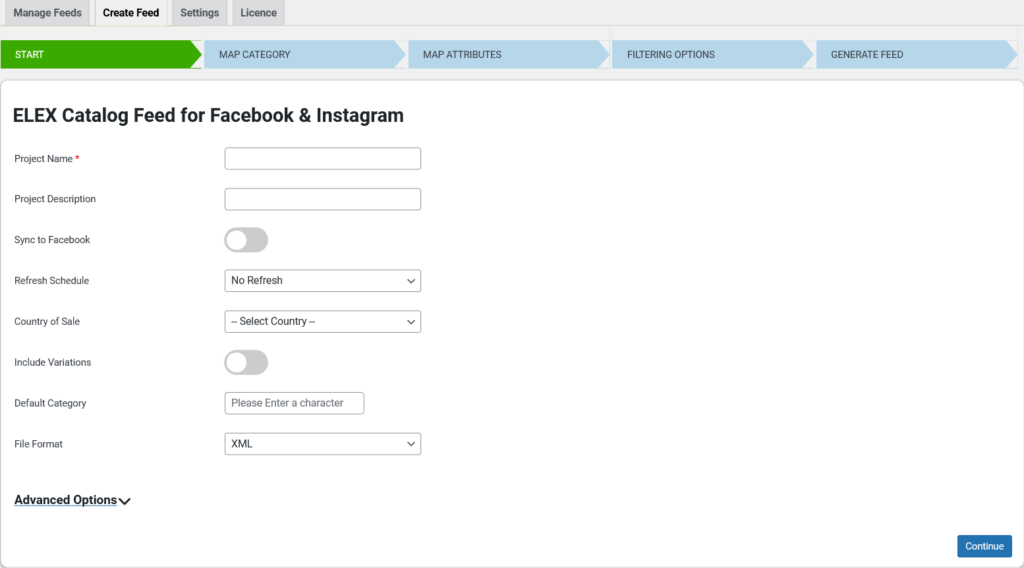

Catalog Feed Basic Information
Give a name to your feed, and a description, and turn on sync with Facebook so the product information from the WooCommerce database is automatically synced with your Facebook page content.
When turning on sync to Facebook, you will be taken to the Settings section.


Click on the “Connect FB” button and you will be redirected to Facebook. You will have to either login or sign up depending on whether you are logged in or have a Facebook account associated with your WooCommerce store.


ELEXtensions will then request to access your account’s name and profile picture and to manage your business and product catalogs present on your account.


These permissions are required to smoothly sync your WooCommerce product feed with Facebook so proceed with it.


Creating a New Feed after Syncing your Facebook Account
For the purpose of illustration, I have created a sample product feed. Once your Facebook account is synced with the plugin, you can also pick a catalog from your Facebook page. Right now, we only have one catalog so let’s go with it. If you are from the United States, note that you can turn on the Feed for Checkout on Facebook option, and you can also opt for variable products which are only available on the premium version of the plugin.
You can also select how often your product should be refreshed and set a time for it. Also pick the file format of the product feed, whether CSV, XML, etc.


If you offer a lot of types of products under one category, you can also choose a default category to make it easy to change only the ones that don’t belong to the category under which most of your products come under.
Also, you can add currency settings like the code and conversion rate in the advanced options menu in this section.
Once you have created a feed, let us now sync your feed with your Facebook business account. To do that, make sure you have a Facebook Business account.
Map Category


In the next section, you can map the categories of your product with Google’s category list which is used as a benchmark. Match the categories if any product does not belong in the default category if you have chosen one and move to the Map Attributes section.
Map Attributes
Here, the plugin will pull data from your product listing and match it with Facebook’s default product attributes. Similarly to category mapping, check and complete attribute matching so your products are listed relevantly in the Facebook feed.


By default, the matching will predict attributes and map them automatically but you have to make sure they are done correctly and are done for all mandatory fields to proceed to the next step.


In this example. I have picked the apparel category as my products belong to the category and so the attributes are relevant to the apparel. After adding and matching the mandatory attributes, you can add additional attributes that can further narrow down the information about your products.
Additional Product Attributes


If any of the required attributes are missing or are not appropriate, you will be notified when the feed is generated so you can also correct them later so it shows up on Facebook correctly.


To show how the product attributes change with the category your products belong to, I have created a sample product listing where the default category is Computers.
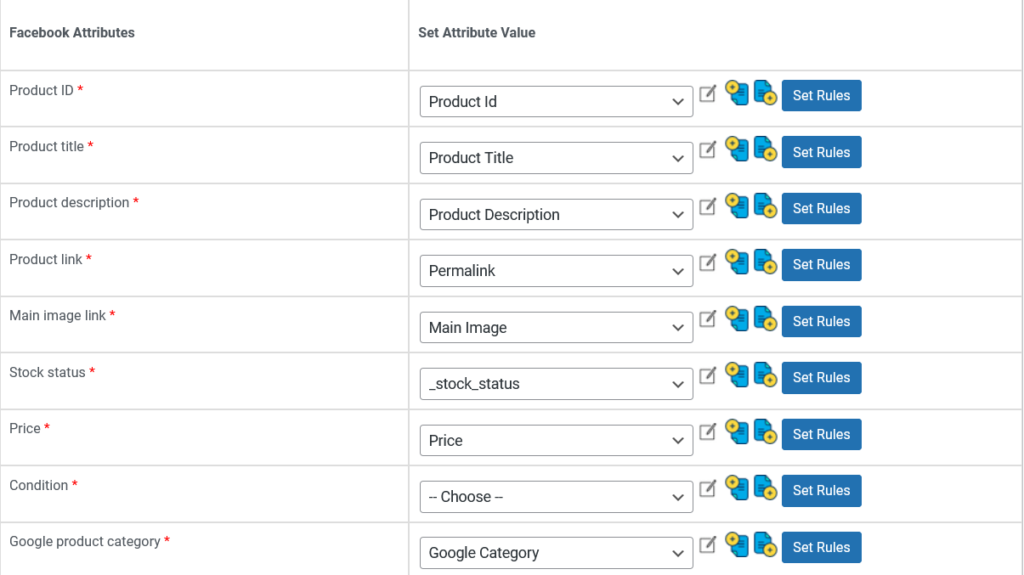

In case this is confusing, the product category is a broad classification as to whether your product is clothing items, electronics, food, etc and attributes refer to particulars like the operating system of a computer, or the size and gender of clothing, etc.


You can also set rules in the attributes section for a wide variety of conditions on what is displayed and how in the products attributes section.
Filtering Options


Next is the filtering section where you can filter out products based on certain criteria like the quantity of stock available, the quantity of stock sold, and the status of the stock, and also selectively exclude stocks.
Access Generated Feed


Here, you can access the feed generated and if there are any products that are excluded from the feed because of the absence of any product parameters. With all done, you can manually download the feed by clicking on “View Feed”.
Settings
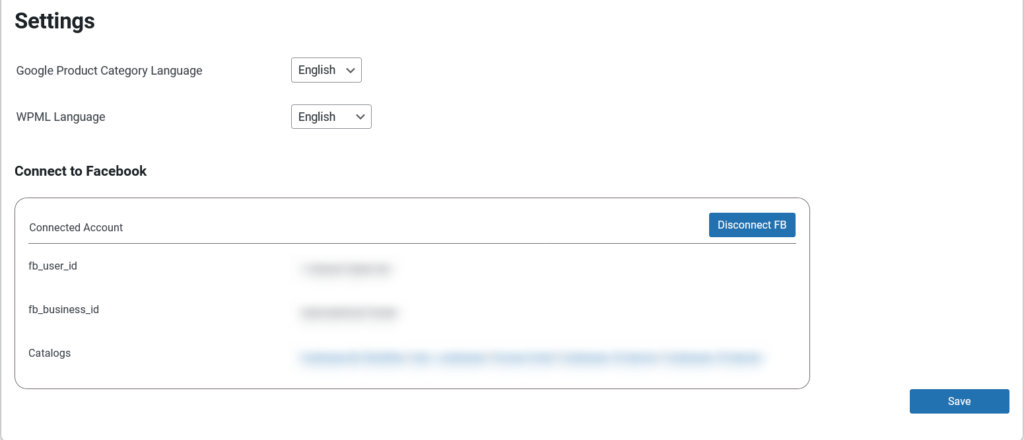

In the settings section, you can change the product category language as well as the WPML language. Additionally, you can disconnect your Facebook if you want. Make any changes you want and save it, and let us now see the catalog feed in Facebook.
Catalog Feed in Facebook
Now go to the Facebook Commerce Manager to access your Facebook Catalog that is now synced with your WooCommerce store.


Once synced, you can access the catalog feed and see its different attributes and customize them as you wish. The feed will refresh and sync if you had chosen the option in the plugin while setting up your feed, or you will have to refresh it manually.
Let us now see how you can open and edit the attributes of a product from your catalog feed.
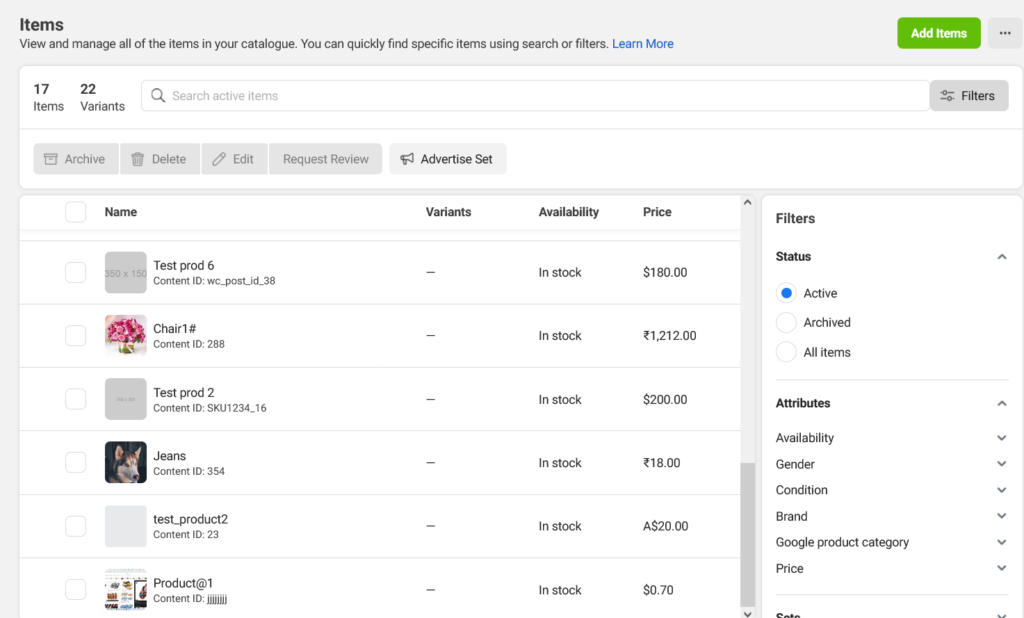

I have clicked on one particular product, and now we can see more information about the product like the price, website link, product description, availability, and the QR code to directly access the product.


If you click on the edit item button, you will be taken to the page where you can customize the different attributes of the product as shown below.
You can edit the product information as you want and update it. You can also create variants for the product like sizes and colors and other attributes depending on the type of product.






Once you are satisfied with how your product feed is, you can now use your synced WooCommerce product catalog feed on your Facebook page to display your product feed on Facebook and Instagram marketplaces and also run advertisement campaigns. And since Meta owns both Facebook and Instagram, you can directly use your created feed for Instagram as well quite easily

